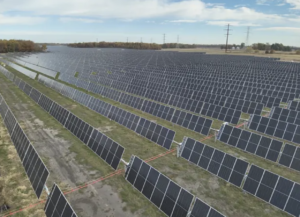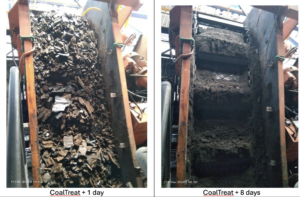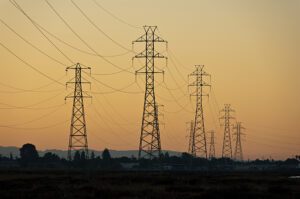From financial dashboards to factory-based assembly, utilities and their contractors are deploying new tools and processes to improve project cost performance.
In decades past, the decision to pursue a major energy infrastructure project rested on financial viability. Projects moved forward only when forecasts showed that construction costs could be contained within projected budgets and that expected revenues would justify the capital outlay. Budgets defined scope and technology choices, and engineering, procurement, and construction (EPC) firms engineered solutions to fit within that framework. But according to research published by Benjamin K. Sovacool and Hanee Ryu of Boston University in the journal Energy Research & Social Science (March 2025), cost overruns appear to have become structurally embedded in energy infrastructure delivery.
The analysis examined 662 energy projects spanning 83 countries built between 1936 and 2024, representing more than 400 GW of capacity. It found actual costs of $1.358 trillion against $812 billion budgeted—a 66% overrun. More than three-fifths of all projects exceeded budget, and the average escalation was 40.6%.
Perhaps more striking is that the pattern varied sharply by technology. Nuclear power projects exhibited the most extreme escalation—102.5% on average, roughly doubling initial estimates—followed by hydropower (36.7%), geothermal (20.7%), and fossil-thermal (9.7%). Solar and transmission projects delivered the most consistent results, finishing 2.2% and 3.6% below budget, respectively. Time delays mirrored this technology divide: nuclear builds averaged 64% schedule overruns, geothermal 58.8%, while solar remained near baseline.
In addition, Sovacool and Ryu’s regression analysis identified two critical structural breakpoints—1,280 MW and 1,561 MW—beyond which diseconomies of scale accelerate sharply. Projects exceeding 1,561 MW showed disproportionately higher cost escalation. A second threshold emerged at 87.5% of schedule delay, where cost relationships shifted non-linearly as projects were re-scoped or restructured.
Meanwhile, a 2024 Massachusetts Institute of Technology analysis found that while the first two AP1000 units at Georgia Power’s Vogtle site (Figure 1) reached roughly $35 billion in total cost—equivalent to about $15,000/kW in 2024 dollars—subsequent units could achieve an overnight cost reduction of up to 45% through design completion, supply chain stabilization, and workforce experience. The study projects that the “next two” AP1000s could be built for $8,300 to $10,375/kW with further learning-by-doing potentially driving “Nth-of-a-kind” costs toward $4,625/kW and a levelized cost of electricity (LCOE) of $66/MWh.
 |
|
1. Plant Vogtle Units 3 and 4 in Georgia encountered notable delays and cost overruns, but future AP1000 projects could benefit greatly from the experience. Courtesy: Georgia Power |
And contrary to conventional wisdom, high-income economies exhibited 37% higher escalation than low-income ones. North America posted 74% higher cost growth than sub-Saharan Africa—potential evidence that governance density, layered oversight, and regulatory change amplify cost risk rather than contain it.
According to the findings, technological maturity remains a decisive factor. After 1976, learning effects reduced overruns in modular technologies like solar and wind, but not in nuclear or thermal plants, where design complexity and safety requirements expanded faster than learning gains could compensate. Hydrogen and carbon-capture projects, predictably, already show “significant time and cost overruns, casting doubt on their ability to be rapidly scaled up to meet energy and climate policy priorities,” the research says.
Industry Solutions: Real-Time Architecture and Visibility
The energy and construction sectors, historically hindered by cost overruns and schedule delays at power projects, have increasingly recognized that many of these issues are preventable—stemming from outdated information systems and fragmented decision-making processes. According to a December 2024 analysis from construction management software provider CMiC Global, “Projects frequently exceed their budgets by 20% to 30%, causing financial strain and damaging reputations. In 2025, the problem is compounded by fluctuating material costs, labor shortages, and supply chain disruptions.”
To counteract this, forward-thinking firms are shifting away from traditional monthly status reports, adopting daily monitoring systems that flag variances in real-time, enabling proactive intervention before issues escalate, CMiC says. These firms rely on cloud-based financial dashboards, which now provide comprehensive tracking of labor, equipment, materials, and waste streams, with automated alerts that highlight deviations as they happen. Additionally, many are using mobile field applications that allow onsite personnel to log expenses instantly, eliminating the reporting delays that historically obscured project cost trajectories until critical phases were reached.
“Weekly reviews concentrate on identifying early warning signs of potential overruns—this proactive approach steadily enhances financial control and project predictability,” CMiC reports. Other tools include advanced scheduling software that analyzes historical productivity data to recommend optimal crew sizes, eliminating both overstaffing and understaffing bottlenecks. Additionally, it points to cross-project resource pooling—becoming standard at multi-site organizations—which could centralize equipment and labor, maximizing utilization across project portfolios rather than allowing assets to sit idle, which reduces waste and improves efficiency.
The firm also encourages strategic vendor partnerships that incorporate long-term agreements with volume pricing and guaranteed delivery commitments to replace speculative spot purchasing. Early procurement has also become critical—many utilities maintain vetted networks of pre-qualified suppliers and backup vendors, ensuring the availability of long-lead items amidst ongoing supply chain uncertainties.
However, according to a Bain & Co. analysis of energy transition capital challenges, energy companies may be taking it even further. “Large projects often running 15% to 20% over budget” expose utilities to “$1.5 billion of capital risk annually through 2030,” the global management consulting firm notes. Most energy and natural resource companies still manage projects individually rather than systematically across portfolios, Bain suggests. It recommends that power entities think simultaneously across portfolio, program, and project levels to identify synergies—such as consolidated vendor agreements or shared permitting strategies—that individual project teams cannot see. It cites one example where a U.S. electric utility reduced the construction costs of a multi-year solar program by 15% by elevating program-level decisions to senior leadership and implementing rigorous, data-driven land selection protocols, while negotiating leaner scope requirements and improving schedule visibility with vendors. The result: procurement costs fell sharply when suppliers received comprehensive bid requests instead of incremental project-by-project solicitations.
Technology Enablers: Collaboration, Workforce Innovation, and Modular Construction
As discussed at length in this POWER special report—and as part of all POWER’s deeply reported Top Plant profiles—collaboration, workforce innovation, and digital project management are also poised to play a pivotal role in reshaping energy project delivery. Leading firms are deploying advanced digital tools—integrated project platforms, artificial intelligence–driven analytics, and real-time data dashboards—that enable seamless coordination among stakeholders. Workforce development, notably, has emerged as an industry-wide imperative, and leading EPC firms report launching construction academies, mobile training units, and apprenticeship pipelines to address craft labor shortages.
But at the same time, industry is increasingly turning to modular construction and factory assembly as transformative enablers that directly address scheduling and cost challenges. While advanced digital tools and workforce initiatives foster tighter coordination and higher quality in traditional project execution, modularization takes this a step further by shifting significant portions of engineering, fabrication, and assembly into controlled factory environments.
According to Brendan O’Brien, senior business development manager in the Power Group at Burns & McDonnell, “Modular construction has many benefits in the power sector. It reduces time in the field and puts it into a more controlled environment, which is safer and more predictable. Prefabrication can deliver higher quality, better cost control, and improved ability to control critical path scheduling.” Burns & McDonnell has demonstrated success in fabricating temporary power skids, helical piles for power projects, and repetitive components such as solar pile caps—applications where factory precision directly translates to field efficiency, he noted.
Safety represents a direct economic benefit. According to O’Brien, “Our fabrication shops have gone several years without a lost time accident,” a safety record that translates directly to cost avoidance through eliminated workers’ compensation claims, schedule continuity, and reduced owner liability.
O’Brien cited a peak-shaving liquefied natural gas (LNG) project that exemplified the problem-solving capability of modularization. Facing stringent Pipeline and Hazardous Materials Safety Administration (PHMSA) siting requirements and unique piping configurations between liquefaction systems, tanks, and vaporizers, the project team required running LNG piping in concrete trenches installed on top of pipe racks. “Our prefabrication shop supplied, prefabricated, inspected, and delivered 18 fully assembled pipe rack modules for both LNG facilities. The work done at the shops, including pre-alignment, allowed for efficient module installation onsite, saving time and resources.” Each module incorporated structural steel, process and utility piping, pipe supports, insulation, coating, cable tray, and precast concrete trenches—work that would have extended field timelines by weeks, he said.
Modularization’s greatest strength often emerges in crisis response. On a reciprocating internal combustion engine project, a piping dimension mismatch threatened delays. O’Brien recounted: “Our onsite team identified the problem, our design team in India developed a solution overnight, and our construction subsidiary, AZCO, used the prefabrication shop to deliver a custom fix. This seamless coordination across disciplines and time zones turned a potential crisis into a testament to our team’s agility and commitment to keeping the project on schedule. These scenarios truly embody the importance of prefabrication.”
Regulatory, Permitting, and Legal Risks: New Realities for 2025
Some risks, however, may prove unavoidable. Despite industry-wide improvements in project controls, permitting bottlenecks and regulatory uncertainty will likely continue to drive schedule and cost escalation. According to Lawrence Berkeley National Laboratory, the interconnection queue now totals about 2,300 GW—almost double the nation’s installed capacity—with solar and wind projects waiting five years or more for grid connection, up from two years in 2008. High-voltage transmission remains even more constrained: only 322 miles of 345-kV lines or greater were completed in 2024, far short of the Department of Energy’s (DOE’s) 5,000-mile annual target.
Meanwhile, legal challenges compound delays. According to Resources for the Future, nearly one-third of solar projects and half of wind projects that complete National Environmental Policy Act (NEPA) reviews face litigation, extending timelines by an average of 4.2 years, and agencies prevail in 80% of cases. Notably, however, the Supreme Court’s May 2025 ruling in Seven County Infrastructure Coalition v. Eagle County narrowed NEPA’s scope, potentially reducing future litigation risk.
For nuclear projects, the Nuclear Regulatory Commission (NRC) faces dual pressures. An executive order issued in May 2025 directed the NRC to establish 18-month licensing deadlines for new reactors and 12-month limits for license extensions, with fee caps tied to those timelines. The NRC has since introduced reduced hourly rates—$148 versus $318—for advanced reactor applicants effective October 2025, cutting review costs by more than 50%, but accelerated timelines have raised concerns about staffing capacity and safety review adequacy.
Finally, the Environmental Protection Agency’s (EPA’s) June 2025 proposal to repeal greenhouse gas and mercury standards for power plants created more regulatory uncertainty for operators who had already begun compliance investments. Most utilities are now bolstering legal risk assessment and crafting parallel-path permitting strategies to maintain schedule flexibility amid evolving federal policy.
—Sonal Patel is a POWER senior editor.











